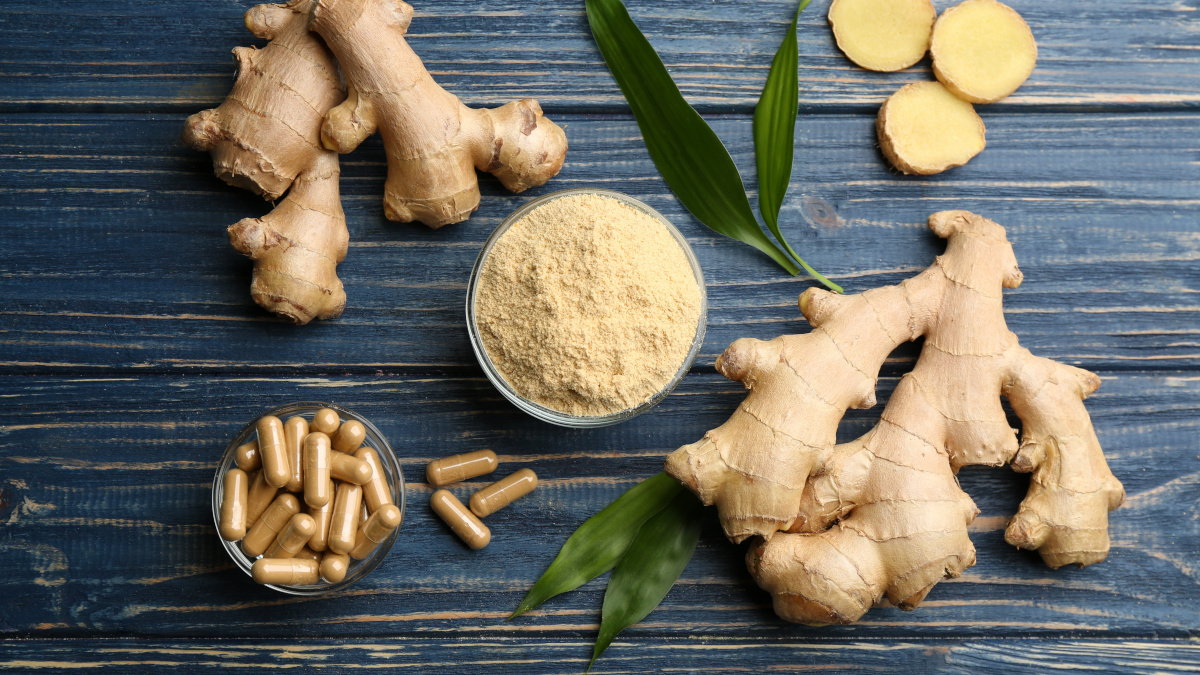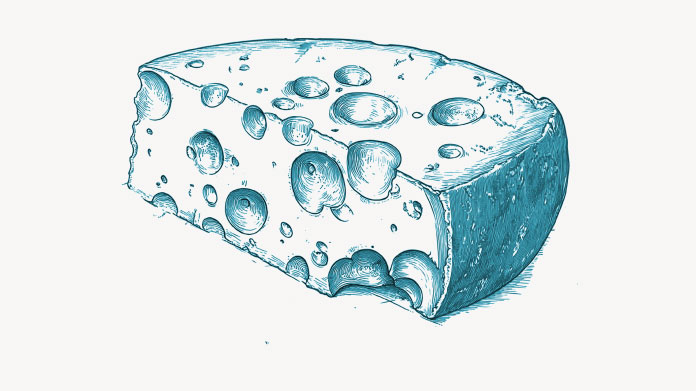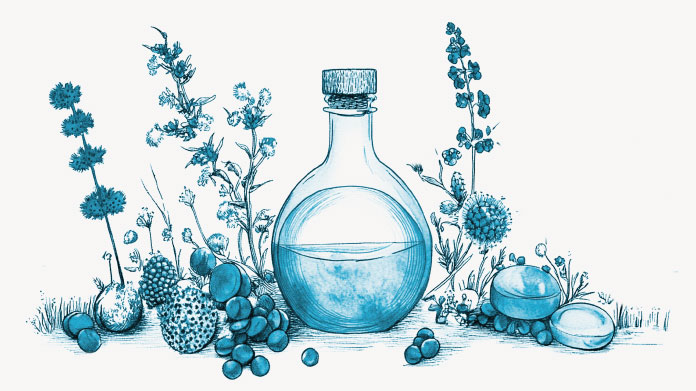Why take a ginger supplement?
A key ingredient in Asian cooking, ginger has also been used in traditional Chinese medicine for thousands of years. What are its benefits? How should you use it? Read on to find the answers to these and other questions.

What exactly is ginger?
Ginger (Zingiber officinale) is a tropical perennial primarily cultivated in its native India, as well as in China.
It is normally the rhizomes that are used. These are the plant’s underground roots which have a distinctive fragrance and spicy flavor.
Ginger is a spice used in many recipes across the globe. It is found in drinks such as ginger ale, in curries, and in cakes, as well as in the famous gingerbread.
A medicinal root prized by many cultures
Ginger has long been used in Chinese medicine, particularly for its direct action on certain meridians.
It is also regarded as a ‘universal medicine’ in Ayurveda (India’s traditional system of medicine).
The Kama Sutra, the 6th century Indian text which describes various sexual practices, contains many references to ginger’s specific properties. In the same vein, the Comtesse du Barry (the mistress of Louis XV) was known to have given ginger to her lovers. We’ll return to ginger’s health benefits a little later.
Composition of Zingiber officinale: what exactly is in ginger?
Ginger contains 60% starch, protein, fats, polysaccharides, essential oils and resin (1).
Its spicy taste, which produces a hot feeling in the mouth, comes from the root’s phenols: gingerol, zingerone, paradol and shogaol.
As the most biologically active of these phenols, gingerol is primarily responsible for ginger’s beneficial effects(2).
Health benefits of ginger
Widely recommended by naturopaths, ginger helps to:
- maintain the immune system(3) ;
- support healthy digestion(4) ;
- maintain a healthy heart (5) and lungs (6) ;
- regulate metabolism (7) ;
- support energy and vitality (8) ;
- and promote well-being when travelling(9).
In addition, ginger contains antioxidants (10), the molecules that reduce the activity of the infamous free radicals which cause premature aging of our cells.
How should you consume ginger?
Ginger can be consumed in a number of ways:
- fresh. If you like its distinctive taste, grate 1-2cm of ginger root and add to your cooked dishes and salads;
- in a tea (either hot or iced depending on the season). Grate 5g of ginger and allow to infuse for 10 minutes in a cup of water. You can add a little honey to sweeten its spicy taste, and drink 2-4 cups a day;
- in powder form, also for mixing with a drink;
- pickled (this is invariably served as an accompaniment to raw fish dishes in Japan) ;
- preserved, to either enjoy as a sweet or to add to desserts, etc.
Ginger supplements: what are the benefits? Which should you choose?
There are many reasons why ginger supplements are popular:
- some people don’t like the taste of ginger
- or the burning tongue sensation it produces;
- or simply want to significantly increase their intake of gingerol, the main active ingredient in ginger, for medicinal purposes.
Indeed, you can take a ginger supplement to naturally support your digestion, immune system, respiratory tract, cardiac health and vitality.
When buying a ginger supplement, make sure it has a high gingerol content (such as the product Super Gingerols, standardized to 20% gingerols), offering guaranteed efficacy.
Synergistic formulations: the best supplements with a high ginger content
You’ll also find ginger alongside other ingredients in synergistic formulations:
- because of its benefits for respiratory health, ginger is often combined with Terminalia and Piper (for example in Aller-7®) ;
- it’s also available, with other plant extracts, in certain natural alkaline formulations(such as Alkaline Formula);
- and last but not least, ginger features in Ayurvedic potions (such as Adaptogenic Potion, which contains no less than 10 key plants and mushrooms including ginger, holy basil and reishi.)
References
- Bruneton, J., Pharmacognosie - Phytochimie, plantes médicinales, éd., revue et augmentée, Paris, Tec & Doc - Éditions médicales internationales, , 1288
- Mao QQ, Xu XY, Cao SY, et al. Bioactive Compounds and Bioactivities of Ginger (Zingiber officinale Roscoe). Foods. 2019;8(6):185. Published 2019 May 30. doi:10.3390/foods8060185
- Sultan MT, Butt MS, Qayyum MM, Suleria HA. Immunity: plants as effective mediators. Crit Rev Food Sci Nutr. 2014;54(10):1298-308. doi: 10.1080/10408398.2011.633249. PMID: 24564587.
- Anh NH, Kim SJ, Long NP, et al. Ginger on Human Health: A Comprehensive Systematic Review of 109 Randomized Controlled Trials. Nutrients. 2020;12(1):157. Published 2020 Jan 6. doi:10.3390/nu12010157
- Bode AM, Dong Z. The Amazing and Mighty Ginger. In: Benzie IFF, Wachtel-Galor S, editors. Herbal Medicine: Biomolecular and Clinical Aspects. 2nd edition. Boca Raton (FL): CRC Press/Taylor & Francis; 2011. Chapter 7.
- Mao QQ, Xu XY, Cao SY, et al. Bioactive Compounds and Bioactivities of Ginger (Zingiber officinale Roscoe). Foods. 2019;8(6):185. Published 2019 May 30. doi:10.3390/foods8060185
- Wang J, Li D, Wang P, Hu X, Chen F. Ginger prevents obesity through regulation of energy metabolism and activation of browning in high-fat diet-induced obese mice. J Nutr Biochem. 2019 Aug;70:105-115. doi: 10.1016/j.jnutbio.2019.05.001. Epub 2019 May 21. PMID: 31200315.
- Mashhadi NS, Ghiasvand R, Askari G, Hariri M, Darvishi L, Mofid MR. Anti-oxidative and anti-inflammatory effects of ginger in health and physical activity: review of current evidence. Int J Prev Med. 2013;4(Suppl 1):S36-S42.
- Bode AM, Dong Z. The Amazing and Mighty Ginger. In: Benzie IFF, Wachtel-Galor S, editors. Herbal Medicine: Biomolecular and Clinical Aspects. 2nd edition. Boca Raton (FL): CRC Press/Taylor & Francis; 2011. Chapter 7.
- Mashhadi NS, Ghiasvand R, Askari G, Hariri M, Darvishi L, Mofid MR. Anti-oxidative and anti-inflammatory effects of ginger in health and physical activity: review of current evidence. Int J Prev Med. 2013;4(Suppl 1):S36-S42.
14 Hours
The price for Dr
The price for Dr. Pero's AC-11 is reasonable and in line with his views. (my former colleague). Keep it pure.
CAMPBELL Clayton
3 Days
Right on every time.
Right on every time.
Arthur Nicholas
6 Days
They are cheaper than everyone else and…
They are cheaper than everyone else and the shipping was fast. Great company.
Patricia Adams
12 Days
Availability of quality health…
Availability of quality health supplements and it's wide variety is impressive. Ordering is seamless and shipping even during the holidays is well streamlined.
Mohamad Hussein
27 Days
A Product worth waiting for when not…
A Product worth waiting for when not available and then arriving as a surprise!
DOMINIC
28 Days
On time shipping
On time shipping
GEORGE Verne
30 Days
Ordering was easy and the product was…
Ordering was easy and the product was delivered with no problems. Appreciated that I was notified when it would arrive. Thanks!
MascarC
35 Days
Great customer service - responsive …
I ordered from them and my item was unavailable for sometime. I was super happy when they reactivated my order and shipped my item which arrived very quickly. Great customer service.
Ruth Rueter
36 Days
Super fast shipping
Super fast shipping
Donald Borling
40 Days
Reputable companysearch and the number of…
The research and the number of selection of products.
NAKHJAVAN Shervin
53 Days
The Anti Aromatase is a great product
The Anti Aromatase is a great product. You just need to have constant inventory. Recently this product has been out of stock.
GEORGE Verne
54 Days
Great help on chat
Great help on chat. Knowledgeable and friendly.
Jason Argos
58 Days
Customer service was fast and friendly.
Customer service helped to stop the transaction process of the subscription. I appreciated that.
Greenie
58 Days
I order here due to the high quality of…
I order here due to the high quality of the products and the quick delivery of items - thank you
Barbara J
59 Days
SuperSmart's Eye Pressure supplements: highly recommended!
I purchase SuperSmart's Eye Pressure supplements regularly for over 5 years, and gotta say they are truly a wonderful product for my Glaucoma. Highly recommended if you have eye pain from your Glaucoma.
D. Martinez




